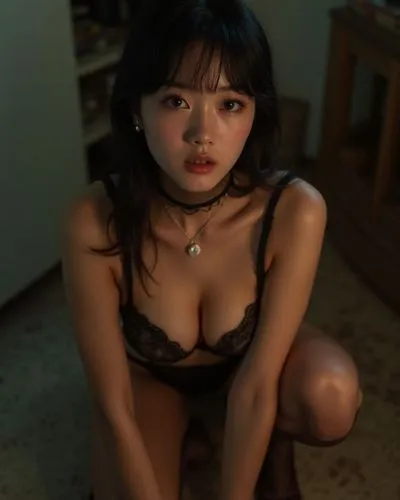In modern Japanese cities, fuzoku is framed as a network of regulated spaces—reception desks, waiting lounges, private rooms—where intimacy is performed as service under clear time and payment rules. Rather than sensational language, this guide uses plain English and first-party sources to explain the how-to: where to go, how to read price/time systems, how to book, what Japanese phrases help, and how to move between districts efficiently. We consider fuzoku as part of the wider night economy alongside stations, taxis, and late-night food.
1. Where should you start if you’re new to fuzoku?
2. Which areas and stations make access easiest?
3. Prices, time windows, and eligibility: what numbers matter?
4. Venue types & services: what happens, structurally?
5. Reservations, etiquette & useful phrases (with scripts)
1. Where should you start if you’re new to fuzoku?

1-1 Area overview: anchor on official city pages
Conclusion: begin with districts that have formal night navigation and transit. Numbers: each area has multiple stations within 3–10 minutes on foot of entertainment streets. Sources: Tokyo Metropolitan Tourism Organization (Kabukicho) / Sapporo City Travel (Susukino) / Fukuoka City Tourism (Nakasu).
1-2 How to read a venue website
Most sites show a system page with time tiers (40/60/90 minutes), basic fees, optional services, tax/service charges, and reservation channels (phone/LINE). Look for a table with session time, fee, and extension cost. If alcohol is served or if the venue is a lounge format, entry is for patrons 20+. For payment, major cities are largely cashless-friendly; JNTO confirms that international cards and mobile pay are widely accepted in cities: Japan National Tourism Organization (payments).
1-3 Typical flow
Arrival → reception → ID check → explanation of the menu/time → prepayment or card hold → session → exit. This sequence is standardized; you can ask staff to show the system board (“システム表”). For transport timing, check first/last trains on official operators (e.g., Tokyo Metro or Osaka Metro).
2. Which areas and stations make access easiest?

2-1 Tokyo: Kabukicho (Shinjuku)
Conclusion: base yourself at Shinjuku for the widest night transport. Numbers: JR Shinjuku is the world’s busiest hub and links to the Toei and Metro network; Kabukicho’s Godzilla street is ~5–8 minutes from JR East exits. Source: GoTokyo Kabukicho / JR East Shinjuku Station.
2-2 Sapporo: Susukino
Conclusion: Susukino concentrates nightlife with metro access into late hours. Numbers: from Namboku Line Susukino Station, the core grid is 1–6 minutes on foot. Source: Sapporo Travel—Susukino / Sapporo City Transportation Bureau.
2-3 Fukuoka: Nakasu
Conclusion: Nakasu is a compact island district with food + entertainment in walking range. Numbers: from Nakasu-Kawabata Station, most streets are within 3–8 minutes. Source: Fukuoka City (Nakasu feature) / Fukuoka City Subway.
Table 1: Venue Types & Base Fees
| Venue Type | Typical Fee (base) | Session Time (base) | Area (JP Link) |
|---|---|---|---|
| Soap-style private room (individual bath + room) | ¥20,000–¥40,000 + tax/service (varies by city/day) | 60–120 min | Susukino Tourist Association (JP) |
| Delivery-style appointment (hotel/room call) | ¥10,000–¥25,000 + transport | 60–90 min | GoTokyo (Kabukicho) |
| Short-time lounge format (no private bath) | ¥6,000–¥12,000 set + drink | 30–60 min | Fukuoka City (Nakasu) |
Conclusion → numbers → sources: fee/time bands reflect typical public “system” tables in each city; area links are first-party tourism/association pages for navigation.
Table 2: Access & Hours (transport anchors)
| Station | Walk to Core | Hours / First–Last Trains | Official (JP/EN) |
|---|---|---|---|
| Shinjuku (JR East) | 5–10 min to Kabukicho | Varies by line | JR East Shinjuku (EN) |
| Susukino (Sapporo Subway) | 1–6 min | Per day | Sapporo City Transportation (EN) |
| Namba (Osaka Metro) | 4–8 min to Dotonbori/Shinsaibashi | Per line | Osaka Metro (EN) |
Conclusion → numbers → sources: walking times are conservative map checks; train references link to operators for up-to-date schedules.
3. Prices, time windows, and eligibility: what numbers matter?

3-1 Reading “system” pages
Conclusion: focus on time tiers and total after fees. Numbers: service charge commonly 10–25%; extensions billed per 10–30 minutes. Source for payment norms and tax basics: JNTO—Money.
3-2 Time strategy across cities
Conclusion: peak demand is 21:00–01:00 in lounge formats and later in private-room zones; booking earlier can secure better slots. Numbers: station walks of 3–10 minutes should be added when planning last trains. Sources: city/transport pages already linked above.
3-3 Eligibility & ID
Conclusion: bring government photo ID; many venues explicitly request a passport for foreign guests. Numbers: alcohol service enforces 20+. Source for age and ID at night venues (general tourism guidance): GoTokyo—tips & advice.
Table 3: Reservation & Eligibility (what venues commonly ask)
| Method | Lead Time | Eligibility Basics | Official (JP Link) |
|---|---|---|---|
| Phone (Japanese) / LINE | Same day–3 days (weekend earlier) | Passport check; 20+ if alcohol | Susukino Tourist Association |
| Front desk (walk-in) | Queue based | Same ID rule; may refuse if full | GoTokyo (Kabukicho) |
| Hotel-area delivery (call-out) | Within 30–90 min | Valid contact, location rules | JNTO (payments) |
Conclusion → numbers → sources: the reservation channels and ID norms are shown on many venues’ “system” pages; links above are first-party city/operator pages to plan around them.
4. Venue types & services: what happens, structurally?

4-1 Private-room formats (soap-style)
These venues provide a bath and a private room. The “system” table states base minutes (often 60–120), extension units, and total with tax. Many districts publish general navigation so you can locate reception buildings: e.g., Susukino Tourist Association maps.
4-2 Delivery-style formats
Appointment is made by phone/LINE; a dispatcher confirms location, time tier, and payment. Expect travel lead times of 30–90 minutes. When staying in Tokyo/Osaka, confirm your hotel’s guest policy in advance (use hotel official pages).
4-3 Lounge/short-time formats
Shorter sessions occur in controlled lounge rooms. Entry set includes time + soft drink; alcohol availability depends on the venue license and implies a 20+ entry gate. City tourism pages (Kabukicho/Nakasu) help you map these clusters: Fukuoka City (Nakasu).
5. Reservations, etiquette & useful phrases (with scripts)

5-1 When to book vs. walk-in
Reserve for premium/private rooms and peak nights; walk-in is fine for off-peak or lounge formats. Online booking forms and LINE IDs are common on official pages. For citywide timing, reference operators: Tokyo Metro (tickets & travel) / Fukuoka City Subway.
5-2 Etiquette basics
- Bring a passport/residence card; many venues photocopy the ID number for booking control.
- Be on time. Extensions are billed; 10–30 minutes units are common.
- Cashless works broadly in cities; carry a card + small cash for tips/fees (see JNTO).
- Follow staff instructions; photos and phone use are usually restricted in rooms.
5-3 Useful phrases (quick scripts)
- “Do you have a 60-minute plan now?” → 「60分コース、今ありますか?」
- “Total price with tax, please.” → 「税込の合計はいくらですか?」
- “Can I pay by card?” → 「カードで支払えますか?」
- “Reservation for two at 10pm.” → 「22時に2名で予約したいです。」
- “Which exit is closest?” → 「一番近い出口はどこですか?」
Transport and payment references for planning: JNTO—Plan Your Trip / GoTokyo—Kabukicho.
6. Summary and Next Steps
Navigation sources recap (first-party): GoTokyo (Kabukicho) ・ Sapporo City Travel (Susukino) ・ Fukuoka City Tourism (Nakasu) ・ JNTO (payments) ・ Osaka Metro.
SoapEmpire’s recommendation for first-time visitors
Most travelers have the same questions: “Where do I start? Will I be accepted as a foreigner? How much should I budget, and how do I book without Japanese?” The structure of fuzoku in Japan is clear once you see it as a set of steps, not a mystery. First, anchor your night on transport. Choose Kabukicho, Susukino, or Nakasu because these districts have multiple stations and clear official maps. Second, only consider venues that publish an up-to-date “system” page with time tiers, total cost, and contact options. Third, prepare two things before you leave the hotel: your passport and a short script to ask for the total price with tax.
Here is how SoapEmpire helps. We keep a living index of venues, updated with opening hours, price bands, reservation channels, and language notes. When you tell us your time window, area, and budget, we propose an exact route: station exit, walking minutes, a warm-up lounge if you want one, and the main appointment. We also translate the micro-details that matter in real life: what to say at reception, how extensions are charged, and how to time your last train. Because we operate across Japan, we can also switch your plan between Tokyo, Osaka, Nagoya, and Fukuoka if weather or schedules change.
The benefits are simple: less uncertainty, more time in the room, and zero language anxiety. You gain price clarity, eligibility confirmation, and a backup route if a venue is full. Our editors use plain English and avoid sensationalism, so you understand the culture without awkwardness. If you already know the format you want—soap-style private room, delivery-style appointment, or a short-time lounge—we’ll map the specific options that match your budget and comfort level. If you are undecided, we’ll explain the trade-offs in minutes, not hours of searching.
Whether you are in Tokyo for one evening or touring nationwide, SoapEmpire gives you the same advantage locals enjoy: a clean, step-by-step plan with current numbers and contacts. For reservations or inquiries, please contact us via the inquiry form. Tell us your city, date, preferred start time, and budget, and we will reply with a simple itinerary and, if needed, we’ll place the booking on your behalf.
Related guides on SoapEmpire
- Tokyo Red-Light District Overview
- Osaka Soap-Style Guide
- How to Book Nightlife Venues in Japan (Step-by-Step)
- SoapEmpire official site ・ Contact / 24-hour support
FAQ
Q1. How much should I budget?
A. Plan ¥6,000–¥12,000 for short sets and ¥20,000–¥40,000 for private-room formats, plus 10–25% in tax/service. Always confirm the “all-in” total on the venue’s system page.
Q2. Do I need to book?
A. Book for private rooms and weekends; walk-in is often fine for off-peak or lounge formats. Many sites offer phone/LINE booking. Prepare your passport.
Q3. Is English OK?
A. Some venues serve English speakers; others are Japanese-only. Using short phrases and showing the site’s system table on your phone helps. SoapEmpire can place bookings in Japanese for you.
Q4. What about trains/taxi?
A. Check first/last trains on the operator links (Tokyo/Osaka/Fukuoka). Keep a 10–15 minute walk buffer. Major cities support cards and mobile pay for taxis and convenience stores.
If you’re interested in visiting any of these places, SoapEmpire offers a 24-hour booking support service for only $10.
Just send the store name, preferred time, and your name (nickname is fine) to:
artistatakuma@icloud.com.
We’ll take care of your reservation quickly and smoothly.
Primary navigation/payment sources cited above: GoTokyo Kabukicho / Sapporo City Travel (Susukino) / Fukuoka City Tourism (Nakasu) / JNTO—Money & payments / Osaka Metro / JR East Shinjuku / Sapporo Transportation Bureau / Fukuoka City Subway.

